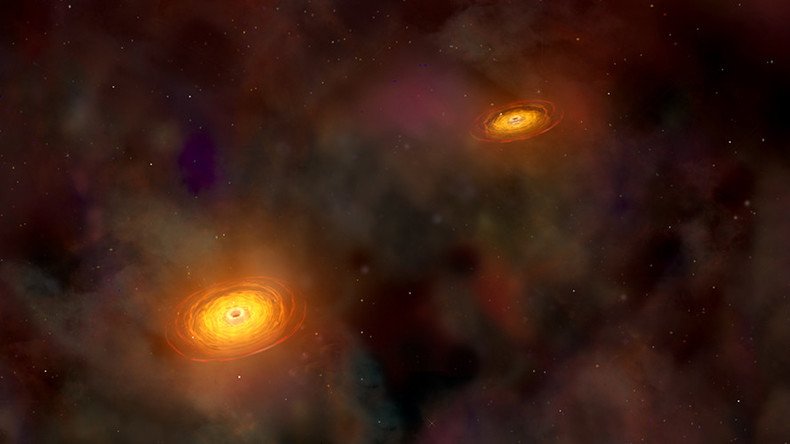Elusive supermassive black hole ‘couples’ discovered by NASA (VIDEO)

Several pairs of supermassive black holes have been detected by NASA observatories in a rare find that scientists say could shed light on how the phenomena produce the strongest gravitational wave signals in the universe.
The ‘couples’ form when two galaxies collide and merge with each other, forcing their supermassive black holes close together.
READ MORE: Black hole 100,000 times bigger than sun discovered near center of Milky Way
Five black hole ‘couples’ were identified by astronomers using a combination of data from a number of telescopes, including NASA's Chandra X-ray Observatory, the Wide-Field Infrared Sky Explorer Survey (WISE) and the Sloan Digital Sky Survey (SDSS).
#News: 5 new pairs of merging supermassive #BlackHoles discovered! May assist in future #GravitationalWave#science! https://t.co/srNUApZHZfpic.twitter.com/Cbayx3cgYY
— Chandra Observatory (@chandraxray) October 3, 2017
Previously, fewer than 10 confirmed pairs of growing black holes were observed from X-ray studies – and these sightings were based mostly on chance detections.
“Astronomers find single supermassive black holes all over the universe. But even though we’ve predicted they grow rapidly when they are interacting, growing dual supermassive black holes have been difficult to find,”explains Shobita Satyapal, lead author of a research paper on the discovery.
Scientists undertook a systematic search of telescope data to identify the dual black hole systems.
Closely-separated pairs of X-ray sources were found in five systems, providing evidence that they contain two growing supermassive black holes.
The data also suggests that these giant black holes are buried in large amounts of dust and gas.












